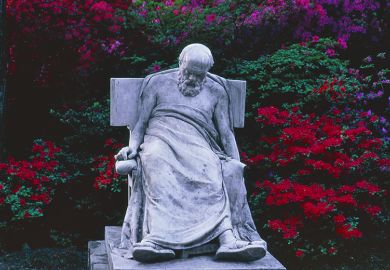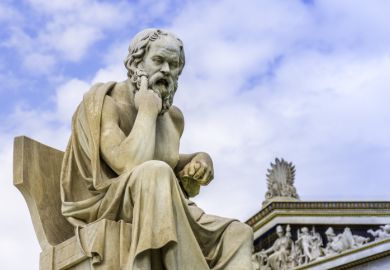This book is timely in its publication and timeless in its content. Political pushing and commercial pulling increasingly portray patients as clients and purchasers of care. Doctors are considered to be interchangeable "service providers" who will be obliged to work in shifts and transfer the care of their patients to others when the clock strikes a certain hour. Medicine will be a commodity to be bought or ordered like buying a television set or a car. Health managers tend to think about systems, pathways, processes and protocols, all of which doctors consider to be contrary to the key issue of professional autonomy. For the trained clinical doctor, protocols are contradictory to medical professionalism.
Management is based on a strong model of upward accountability. Medicine is based on a strong model of relative independence and a specific unwavering and direct accountability to the individual patient. What is good for the many may not be good for the one.
The Greeks brought their sick to the temples of Asclepius, where they underwent a ritual of fasting, bathing and sacrificial offerings. Called katharmos , meaning a physical and mental cleansing or purification, this process was said to bring the patient into harmony with nature and with the divinity. The title of this book, Catharsis , reminds all doctors of the necessity to treat the patient as a whole person.
Andrzej Szczeklik analyses what it is to be a doctor. He considers many aspects of medicine, from its earliest derivations in magic and mythology to its current practice based on clinical trials and scientific discovery.
Above all, in thinking about the wonders of newly discovered biological information and the endless promise afforded by the mapped human genome, he rejoices in the art of medicine and in the supreme importance of the relationship between doctor and patient. The doctor "needs to be curious about the case history, so that the patient feels that someone, maybe for the very first time, is truly interested in his misfortune". He stresses how the compassionate and trained clinician can detect diagnostic clues denied to the inattentive ear or untrained eye.
Recalling the analogy between the structure and rhythm of the cosmos and the rhythms of Earth and mankind, Szczeklik explains and interprets many Greek myths. The belief that Asclepius was transformed into a serpent by Apollo before Zeus's thunderbolt struck leads to a description of the ambiguity of the serpent in medicine, representing both healing and injury.
The entwined spiral of serpents associated with medicine can also represent, we are reminded, the double helix shape of DNA.
Drawing on mathematical ideas, physics, music, mythology, clinical science and clinical practice, Szczeklik never forces the issues or compels. He treads lightly. He reminds and explains. He draws attention to details of physiology that can be explained and those that remain mysterious. He shifts gears effortlessly between the known and the mysterious and, being a cardiologist, seems particularly at home in explaining the amazing conducting system of the heart. To describe a single extrasystole, an ectopic heartbeat, as like a slight stumble in a dance and to introduce the complex mechanism of hearing with the statement that "every one of us has a tiny harp inside his ear" suggests that he is a skilful teacher.
The complexities of human proteomics are described with marvellous clarity, avoiding both oversimplification and fanciful speculation. The science of proteomics will allow us to recognise the many hundreds of thousands of proteins in the human body and to understand how they may be altered in illness. Knowledge of how proteins function and interact will likely lead to the development of drugs that can control and even prevent disease. In discussing the potential "bench-to-bedside" application of proteomics to illness and drug discovery, Szczeklik demonstrates the clinician's pragmatism with the deadpan statement that "the first pit stop in the race is at the patents office".
In spite of his rich understanding of human physiology, he knows the limitations in our knowledge of disease processes and appreciates that much medical practice must deal with uncertainty. He approaches the questions of pain, suffering and death that confront the doctor daily and that the world regards as "terrible, futile and destructive". Here he stresses the immense value of the experienced doctor in helping patients in the loneliness of pain.
The kathartai , forerunners of doctors in pre-Hippocratic Greece, were said to purify the soul by the soothing and calming combination of music, dance, poetry and song. Szczeklik is in tune with them.
Niall O'Higgins is president of the Royal College of Surgeons in Ireland.
Catharsis: On the Art of Medicine
Author - Andrzej Szczeklik
Publisher - University of Chicago Press
Pages - 161
Price - £13.00
ISBN - 0 226 78869 5
Register to continue
Why register?
- Registration is free and only takes a moment
- Once registered, you can read 3 articles a month
- Sign up for our newsletter
Subscribe
Or subscribe for unlimited access to:
- Unlimited access to news, views, insights & reviews
- Digital editions
- Digital access to THE’s university and college rankings analysis
Already registered or a current subscriber?



